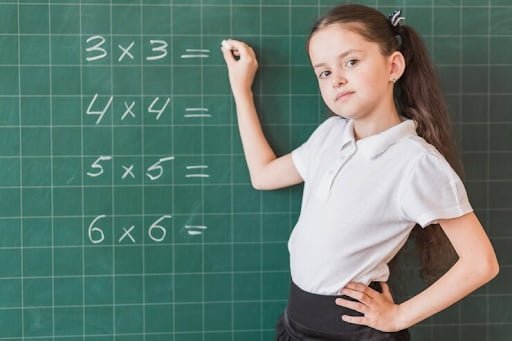Mathematics is a fundamental subject that forms the backbone of logical reasoning and problem-solving skills. For Primary 1 students, it marks the beginning of their formal education in math, setting the stage for future academic success. This article explores the core concepts, teaching strategies, and activities that make mathematics for primary 1 more engaging and effective, ensuring that young learners develop a strong foundation in this essential subject.
The Importance of Mathematics in Early Education
Early exposure to mathematics is crucial for several reasons:
- Develops Problem-Solving Skills: Mathematics teaches students to think critically and solve problems systematically.
- Enhances Logical Reasoning: It helps children understand patterns, relationships, and structures, which are essential for logical thinking.
- Promotes Cognitive Development: Early math skills are linked to better academic performance in later years.
- Builds Confidence: Mastery of basic math concepts boosts children’s confidence, encouraging a positive attitude towards learning.
Core Concepts mathematics for primary 1
Mathematics for primary 1 covers a range of fundamental concepts that serve as building blocks for more advanced topics. These include:
1. Numbers and Counting:
Understanding numbers is the first step in learning mathematics. Students are introduced to:
- Number Recognition: Identifying numbers from 1 to 100.
- Counting: Counting objects and understanding the concept of quantity.
- Number Writing: Learning to write numbers correctly.
- Number Sequences: Recognizing and creating simple number patterns.
2. Basic Addition and Subtraction:
Addition and subtraction are foundational arithmetic operations. Primary 1 students learn to:
- Addition: Combining two or more quantities to find the total.
- Subtraction: Determining the difference when one quantity is taken away from another.
- Using Symbols: Understanding and using the plus (+) and minus (-) symbols.
- Word Problems: Solving simple word problems involving addition and subtraction.
3. Shapes and Geometry:
Geometry introduces students to the properties and relationships of shapes. Key topics include:
- Shape Recognition: Identifying common shapes like circles, squares, triangles, and rectangles.
- Shape Properties: Understanding the attributes of shapes (e.g., number of sides, corners).
- Spatial Awareness: Recognizing shapes in different orientations and contexts.
4. Measurement:
Measurement helps children understand the concept of size and comparison. Primary 1 students learn to:
- Length: Comparing lengths of objects using terms like longer, shorter, and equal.
- Weight: Understanding the concept of weight and comparing objects using terms like heavier, lighter, and equal.
- Time: Recognizing days of the week, months, and basic time concepts (e.g., morning, and afternoon).
5. Patterns and Sequences:
Recognizing and creating patterns is an essential skill in mathematics. Students practice:
- Identifying Patterns: Recognizing repeating patterns in numbers, shapes, and colours.
- Creating Patterns: Making their patterns using objects, drawings, or numbers.
Effective Teaching Strategies for Primary 1 Mathematics
Teaching mathematics to young learners requires a blend of creativity, patience, and effective strategies. Here are some approaches that can make learning math fun and engaging:
1. Hands-On Activities:
Using manipulatives such as counters, blocks, and beads helps children understand abstract concepts concretely. For example, counting objects or using blocks to demonstrate addition and subtraction makes learning tangible and relatable.
2. Visual Aids:
Visual aids like charts, flashcards, and posters can enhance understanding and retention. Visual representations of numbers, shapes, and patterns help students grasp concepts more easily.
3. Interactive Games:
Math games are a fun way to reinforce concepts. Board games, card games, and digital apps designed for early math learning can make practice enjoyable and interactive.
4. Storytelling and Word Problems:
Incorporating stories and word problems into math lessons helps students apply concepts to real-life situations. This approach enhances comprehension and makes learning more meaningful.
5. Consistent Practice:
Regular practice is key to mastering math skills. Incorporating daily math exercises and homework helps reinforce what students learn in class.
6. Encouraging Exploration:
Allowing children to explore and experiment with numbers and shapes fosters curiosity and a deeper understanding. Open-ended activities where students can discover patterns or solve problems in multiple ways encourage critical thinking.
7. Positive Reinforcement:
Praising efforts and celebrating successes, no matter how small, builds confidence and motivation. Positive reinforcement helps students develop a positive attitude towards math.
Activities to Support Mathematics Learning in Primary 1
Engaging in activities can make learning math enjoyable and effective. Here are some activities that parents and teachers can use to support Primary 1 mathematics learning:
1. Number Hunts:
Create a number hunt game where children search for numbers around the house or classroom. This activity helps with number recognition and counting.
2. Shape Collages:
Provide various cut-out shapes and ask children to create pictures or collages. This activity reinforces shape recognition and properties.
3. Measurement Fun:
Use everyday objects to teach measurement. Have children compare the length, weight, or height of different items using non-standard units like paper clips or blocks.
4. Pattern Play:
Create pattern cards with different sequences and ask children to continue the patterns. Use beads, buttons, or drawings to make it more interactive.
5. Math Storytime:
Read stories that involve math concepts, such as counting, addition, or shapes. Discuss the math elements in the story and relate them to real-life situations.
6. Cooking Together:
Involve children in cooking activities where they can measure ingredients, count items, or follow step-by-step instructions. This practical application of math concepts makes learning relevant and fun.
7. Interactive Apps:
Use educational apps designed for early math learning. These apps often include games, puzzles, and quizzes that make practice engaging and interactive.
Conclusion
Mathematics for Primary 1 students is about building a strong foundation through engaging and effective teaching methods. By focusing on core concepts such as numbers, basic arithmetic, shapes, measurement, and patterns, and using creative teaching strategies, educators and parents can foster a love for math in young learners. The key is to make learning fun, interactive, and meaningful, ensuring that children develop the skills and confidence they need to succeed in mathematics and beyond. As they progress through their educational journey, the solid foundation laid in Primary 1 will support their continued growth and achievement in this essential subject.


